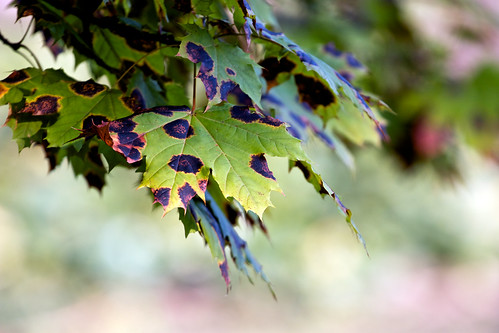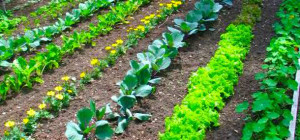Trees being living beings, are susceptible to diseases. A tree needs a fine supply of nutrients, water, light and carbon dioxide from the environment for optimal growth. A deficiency of one or more of these can cause reduced growth of the tree. Here are some commonly occurring diseases of the trees along with the methods of prevention and cure.
1. Dothistroma Needle Blight
A fungus called Dothistroma Pini causes a very common disease called Needle blight. This disease is to be blamed for much of the early needle drop that takes place in the windbreak and ornamental plants. Yellow or brown spots can be seen on infected needles. These oval to elongated spots are formed on the infected needles and are often surrounded by a second yellow band.
To fight the infection it is advised to use a fungicide spray that is copper-based. The spray should be done in two shifts. The first application protects the needles from any the previous infections and the second protects the current season needles.
2. Ash Rust
The ash gets commonly infected with yellow or orange pustules on the leaves and unfortunately there is not much to do to avoid it. This disease is more commonly caused by fungi when the springs are wet. The disease may be non-existent one year and more common during the other.
The only thing you can do to combat this disease is make sure that the tree is not stressed by drought during the summers. It would be a good idea to get about an inch of water in the roots every week during the summer. It is more of a seasonal trouble rather than a long-term damage.
3. Cedar Apple Rust
This disease causes severe damage to apple and crabapple trees. Yellow spots on the leaves of apples and crabapples appear during late spring. These spots enlarge and cause loss of leaves. Loss of leaves and infection of the remaining leaves causes huge loss of tree energy and makes the appearance ugly.
To avoid this, it is recommended to spray the trees with a fungicide twice. First spray is in the pink tip stage (just before flowering) and the second spray is carried out when the wood has faded. Timing of the spray is crucial and will vary every year. Monitor the plants carefully to make sure that they are sprayed at the right time. If the trees are not sprayed in time and they get infected, little can be done with them.
4. Honey Fungus
This disease is frequent in conifers and is also found in trees, shrubs and climbers. Its identification is complicated by the symptoms that they produce and can be mistaken for other problems.
Combating Honey Fungus is very difficult because fungus is found in the soil and sometimes requires sanitizing the floor or infested tree removal as well. It is advised to promote drainage to prevent accumulation of water, irrigate small and compact clay soil and eliminate ground stumps, roots and other debris from dead trees. Tree removal and stump grinding should be done by an expert, they have the right tools and knowledge to carry this out.
5. Oak Decline
Oak decline is disease that acts gradually and involves multiple factors such as site quality, climate and advancing tree age. There can be no single cause attributable for the decline. Trees older than 70 years of age and the ones that are found on drier sites are most affected. The initial indications of the disease are decline of one-third to one-half of the upper crown leaves. Other visible symptoms may include dwarfed, chlorotic or sparse foliage, foliage browning and premature autumn leaf color. Often, diameter growth is reduced before the symptoms surface.
The best method to control oak decline is its prevention by healthy tree maintenance. Thinning minimizes stocking, brings down competition for nutrients and moisture and promotes better physiological condition of the remaining trees. In areas vulnerable to oak decline, 30-40 years old trees should be thinned and finally harvested by the time they are 70. Silvicultural treatment such as mid-story removal and light thinning encourages the development of oak reproduction.
This know-how on prevention and cure of common tree diseases is sure to go a long way in enabling you to maintain a healthy plantation. The symptoms of the diseases must be carefully studied before concluding the possibility of a disease and beginning its treatment.








